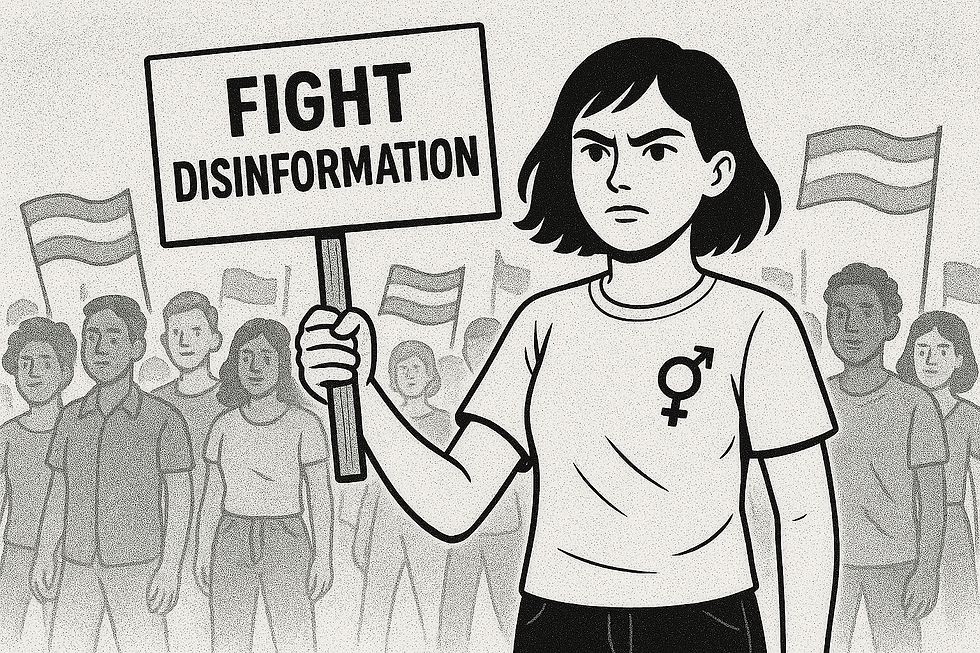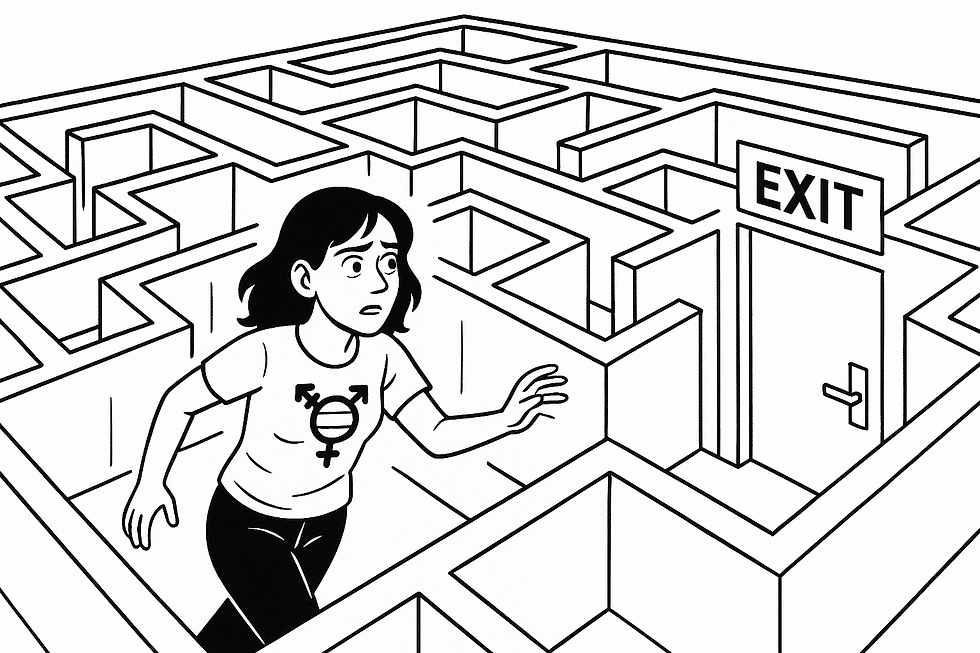Arriving in Canada as residents
- River Champeimont
- Jul 25, 2022
- 8 min read
Here is the story of our preparations and the few days after our arrival in Canada as new residents.
M-3
When we received our confirmation of permanent residency (COPR) in April, we decided to move in July, four months later. This gave us some time to quit our jobs and plan moving out of our apartment, and these things usually require 3 months in advance notice in France. So we notified our employers and our apartment owner.
M-2
We started planning our move with a French company for international moves (AGS) recommended by a colleague.
M-1
We booked our plane tickets with Air Canada, and noticed the strange phenomenon that a single way ticket is more expensive than a round trip one. So we just booked round trip tickets with a return at a random cheap date that we won’t use.
We then reserved an AirBnB for one month. We chose to rent it in Mississauga (a city close to Toronto), because it’s a city that looks nice to live in, so it would make it easier to visit houses there. We have not looked for jobs yet, so we have no idea exactly where we will work. We’ll see in the future if we were right and if we'll really settle in Mississauga.

We finally rented a car for one month to allow us some time to buy one. I have no idea whether this will take less or more time, there is a lot of uncertainty there and we’ll see how things work in practice.
W-2
A few weeks before flying, the moving company came to put our stuff in a truck, to then send it by boat to Canada. They did a fine job packing and protecting everything, even though we are yet to see if it's successful since we haven’t received our stuff yet (which is expected).

We then gave a lot of things to our respective families, especially big electric appliances which wouldn’t be compatible with the electric standard in Canada anyway, as it uses 120 V / 60 Hz, compared to European standard which is 230 V / 50 Hz. This is not a problem for computers or cell phones though, as those include AC to DC transformers, and those usually allow a wide range of input voltages and frequencies (you just need simple adapters for the plug shape).
Moving required us to list all the things we are sending. For the moving company, we needed to estimate everything in euros for the insurance policy. For Canadian customs, we needed to estimate everything in Canadian dollars, so we used an Excel formula to compute the equivalent of the Euro estimations. We also made the same list for things we are bringing directly with us in our luggage, as necessary for Canadian customs too.
W-1
Since we don’t have a job offer in Canada, the IRCC (the institution in charge of immigration in Canada) requires us to bring 12,000 Canadian dollars (CAD) with us in cash. During the application, we already had to show a letter from our bank saying that we had enough money (not necessarily in CAD) but we didn’t need to show the actual money in physical form. But for the actual arrival, the only alternatives were a bank mandate or traveler cheques. So we withdrew a lot of euros from our bank accounts and exchanged them to Canadian dollars near the Bourse (the old stock exchange place) in Paris.

Flight day
Taking the flight is no different than for tourism (proof of vaccination in ArriveCAN, eTA procedure for travel authorization). Things are only different at the arrival. When we arrived at the airport, here is how things worked out:
First, we went through the usual process with the photo and passport control by a machine, just as when we visited Canada as tourists.
Then we met the customs agent, she knew (I don't quite know how) that we were immigrating and checked our COPR and directed us to the “immigration” sign.
There is actually room for a immigration services and there were like 20 people waiting in line, and several desks with agents who were handling the new immigrants. We waited in line for about half an hour, then met an immigration agent who checked our COPR again, asked us how much money we were bringing with us (the agent was not sure whether it was mandatory to bring that much money, so we are not even sure it was worth taking that much cash with us). He then stamped the COPR and asked us to sign it. It’s the document which we will need for every administrative procedure after that. Since we didn’t yet have an address to receive mail, he gave us a document explaining how we can provide our address later to receive our Permanent Resident card.
A guy from the French-speaking center then met us, gave us a USB key (containing a list of administrations) and explained that we needed to get a social insurance number first to be able to open a bank account.
We rejoined the baggage claim room. Since then, our luggage has been put aside since almost an hour had passed.
At customs, we went to “good to declare” (don’t go to “nothing to declare” as usual!). It’s at this point that the list of things we brought with us became necessary. Having printed the two lists (things with us and things coming by maritime container) in advance was very useful, as the customs agent could attach them to the official form and stamp them. We just had to calculate the total of the estimations for the agent, since we forgot to put it in there. We also declared again the money we had brought with us.
Finally, we got our rental car and settled in our AirBnB.

D+1
After our first night in Canada, we started immediately with all the administrative stuff.
First, we wanted to rent a mailbox, since we cannot receive mail at our AirBnB, and we expect many procedures to require receiving mail. However, at the Canada Post Office they told us that we needed a utility bill to prove our residency, which is impossible for us at this point, so we were puzzled. But we then tried to rent a mailbox at a UPS Store and it was possible to open one without a utility bill, and the clerk was very nice.
After this success, we went to an Ontario Service, where we were able to get a health insurance number. We initially thought it was the same thing as the social insurance number (French bias!) but it isn’t, but as we were here it made sense to apply for health insurance anyway, and we got our health insurance numbers. We needed to provide the address where we live (the AirBnB) and the address where we want to receive the health insurance card, for which we provided the mailbox address. So it turned out we were right that renting a mailbox first was a good idea. Overall, Ontario Service was pretty fast and everything took less than half an hour. They told us to go to a “Service Canada” to get the social insurance number.
We therefore went to a Service Canada and we had to wait in a line for more than 2 hours (mostly outside, and nearly all the time standing up except for like 10 minutes at the end) but fortunately the clerk we then met was very nice, the process went smoothly and we got our social insurance numbers. These are needed to open a bank account because they basically allow organizations to uniquely identify people in credit score databases (something completely unknown for French people). This procedure does not require a mailbox at all, since they don’t send any mail, so this could have been done as a very first step in fact.
We then went to a Royal Bank of Canada (RBC) office and booked a meeting the next day to open an account. RBC is one of the main banks in Canada.
Finally, we went to a DriveTest center because I wanted to exchange my French driving license for an Ontario one. You can actually drive in Ontario with a French driving license as a tourist, but you are supposed to exchange it if you settle. We waited for one hour but were then disappointed because we were missing a special certificate by the French administration certifying that my driving license was still valid (I have an old French pink-paper driver’s license without expiration date). The clerk told us that we need a “Relevé d’information restreint”.

D+2
First thing in the morning was to open a bank account at RBC for one of each of us. The banker asked if we also wanted to apply for a credit card, in which case she has to see the COPR. We looked in our document folder and realized with horror that we did not have the documents any more! Did we forget them at the DriveTest center?! We opened bank accounts (chequing and savings) anyway and booked another meeting for the credit card application. We also deposited 12,000 dollars. Not having all this cash on ourselves is something less to worry about.
But we were very worried about our lost COPR documents! We thought that we might have lost them at the DriveTest center, so we went back there. And fortunately they had found them and gave us them back after checking our identity. Big thanks to the DriveTest center!
In the afternoon we subscribed to a cellphone number at Bell. They told us that the rules had recently changed and it was now possible for new immigrants to subscribe even without a credit card, provided that we had our COPR or social insurance number. The process went fine, but it’s clearly a lot more expensive than in France: 85 Canadian dollars (about 65 euros) for 25 GB of data per month, unlimited text and call, but without being able to make international (not even in the US) calls at all for the first 6 months. The good thing is that we were able to use both our new and old SIM cards in our phones, so we could keep our French numbers without buying a second phone.
After getting our phone numbers, we were able to add them to the bank profile, and set up Interac wire transfers. They are a very convenient way to transfer money from an account to another. You just define in your bank account your email and/or phone number, and everyone is able to send you money just by providing either your email or phone number, without inputting any address or bank account number. My wife was able to transfer me money like this which arrived within minutes on my own account, and I received a nice email telling me the money had arrived.

Conclusion
As a general observation, I would say that a striking thing was that everyone, both in private businesses and public administrations, was very nice and tried to help us as much as they could. We did all those things in Mississauga, which we find to be a great city so far.
Even though some processes required us to wait in lines for a few hours, everything was quite efficient in the end since we got a lot done in just a few days. The only tricky thing was to figure out in which order to do things (do I need an address first? a bank account? a phone number?). Maybe this article can help future immigrants with the same questions.
I’ll write a next article after a few weeks about how all the next steps went. See you soon!




Comments